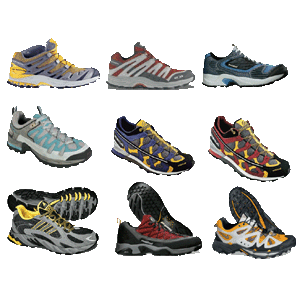
We must have experienced discomfort with our shoes while running. It is because we have the wrong shoes appropriate for us to use when running. The following guidelines you can use to choose running shoes:
1. Dip a bare foot into water and step on a piece of paper placed on a hard surface.
2. Trace the outline of your foot with a pen.
3. Look at the imprint left by the arch of your foot. If you have flat feet, you're probably an over-pronater. A medium arch indicates neutral pronation, and a high arch says supination (under-pronation).
1. Dip a bare foot into water and step on a piece of paper placed on a hard surface.
2. Trace the outline of your foot with a pen.
3. Look at the imprint left by the arch of your foot. If you have flat feet, you're probably an over-pronater. A medium arch indicates neutral pronation, and a high arch says supination (under-pronation).
4. Go to a specialty running or sports store late in the day or after a run.
5. Wear the socks you normally wear when you run, and bring in your old running shoes if possible. A good running-shoe salesperson can tell a lot by the wear of your old shoes, including pronation.
6. Get both feet measured by a salesperson. Choose shoes that fit the larger foot.
7. Talk to the salesperson about the terrain you run on, the mileage you cover, and your pronation.

8. Try on the shoes.
9. Stand up. Press your thumb into the top of the shoe, just above your longest toe. Your thumb should fit between the end of your toe and the end of the shoe.
10. Wiggle your toes. If you can't wiggle with ease, the toe box is too small.
11. Feel the arch bump of the shoe. It should hit slightly toward the rear of your arch.
12. Make sure your heel fits snugly and does not slide up and down as you walk or run.
13. Go for a test jog or walk around the store.
Top Running Shoes 2010 for Neutral














No comments:
Post a Comment